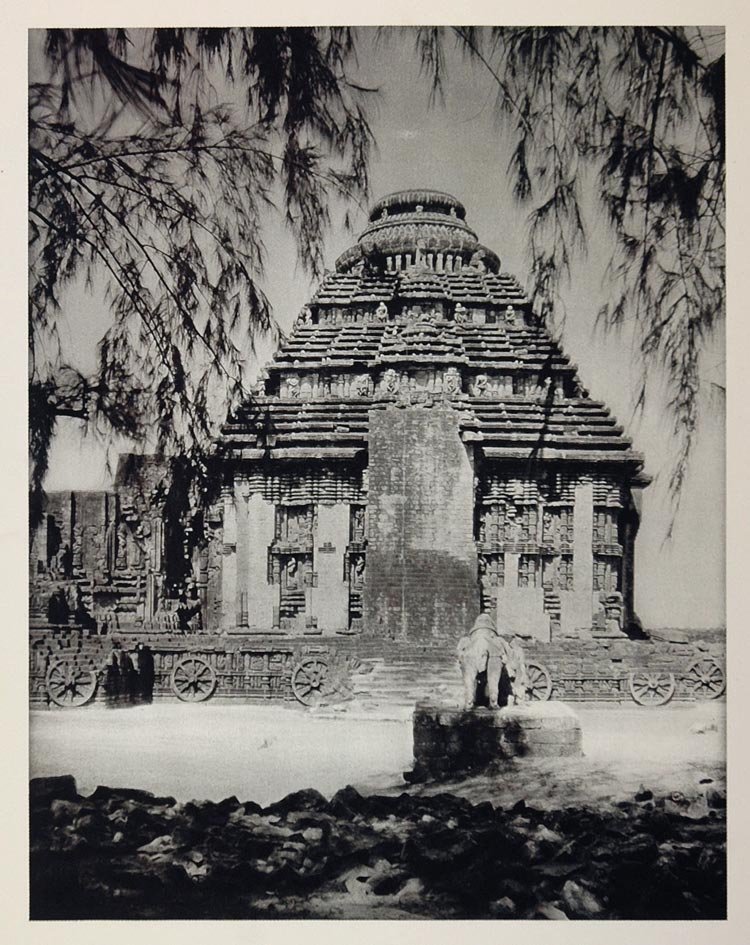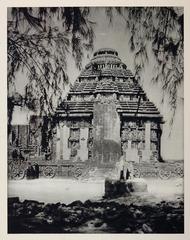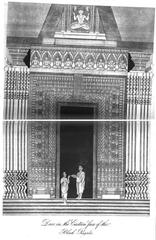
Visiting Konark Sun Temple: Hours, Tickets, and Tips
Publication Date: 16/08/2024
Overview of Konark Sun Temple
The Konark Sun Temple, a UNESCO World Heritage site, is a majestic testament to the architectural genius and spiritual fervor of ancient India. Located in Odisha, India, this 13th-century temple was commissioned by King Narasimhadeva I of the Eastern Ganga Dynasty and is dedicated to Surya, the Sun God. Designed as a colossal chariot, the temple’s intricate carvings and monumental scale have fascinated historians, architects, and travelers alike (Wikipedia).
The temple’s immense cultural and historical significance is reflected in its unique design, featuring 12 pairs of elaborately carved stone wheels and seven horses, symbolizing Surya’s chariot journey across the heavens (UNESCO). Its architectural style, known as Kalinga architecture, is a hallmark of Odisha’s rich heritage. The temple’s carvings depict various aspects of life, from divine beings to everyday scenes, capturing the essence of 13th-century Indian society (TripSavvy).
Despite suffering significant damage over the centuries, the Konark Sun Temple remains a symbol of India’s rich artistic and cultural heritage. Rediscovered by British archaeologists in the 19th century, the temple has been the focus of extensive preservation efforts by the Archaeological Survey of India (ASI) to stabilize and restore its grandeur (Audiala). Whether you are a history buff, an architecture enthusiast, or a spiritual seeker, the Konark Sun Temple offers an enriching and awe-inspiring experience.
Contents
- Introduction
- Origins and Construction
- Architectural Significance
- Cultural and Religious Significance
- Legends and Myths
- Decline and Rediscovery
- Restoration Efforts
- Historical Context
- Iconography and Themes
- Cultural Impact
- Visitor Information
- Visiting Hours
- Ticket Prices
- Guided Tours
- Photographic Spots
- Travel Tips
- Best Time to Visit
- Nearby Attractions
- Special Events
- Accessibility
- FAQ
- Conclusion
Complete Guide to Konark Sun Temple: History, Visiting Hours, and Tickets
Introduction
The Konark Sun Temple, a UNESCO World Heritage Site, is an architectural marvel and a significant cultural landmark in Odisha, India. This comprehensive guide will take you through its rich history, architectural brilliance, visiting hours, ticket information, and much more to ensure you have a well-rounded understanding of this magnificent temple.
Origins and Construction
The Konark Sun Temple, also known as the Black Pagoda, was constructed in the 13th century CE by King Narasimhadeva I of the Eastern Ganga Dynasty. The temple is dedicated to Surya, the Sun God, and was built around 1250 CE (Wikipedia). The temple’s design is a colossal chariot with 12 pairs of intricately carved stone wheels and seven horses, symbolizing the Sun God’s chariot moving across the heavens (UNESCO).
Architectural Significance
The temple is a prime example of Kalinga architecture, also known as the Odisha style. The main sanctum, which once housed the deity, has fallen, but the audience hall (Jagamohana) still stands. The temple complex is adorned with detailed carvings depicting various aspects of life, including deities, musicians, dancers, and scenes from everyday life (TripSavvy). The 24 wheels of the chariot are symbolic of the 24 hours of the day, and the seven horses represent the days of the week (Audiala).
Cultural and Religious Significance
The Konark Sun Temple holds a significant place in Odia culture and religion. It is part of the Golden Triangle of Odisha, which includes the Jagannath Temple in Puri and the Lingaraja Temple in Bhubaneswar (Wikipedia). The temple is also a monumental example of the personification of divinity, forming an invaluable link in the history of the diffusion of the cult of Surya, the Sun God (UNESCO).
Legends and Myths
Several legends and myths are associated with the Konark Temple. One popular legend is that the temple was built by Samba, the son of Lord Krishna, to honor Surya after being cured of leprosy (World History). Another myth suggests that the temple was constructed in a single night by a team of 1,200 artisans (Audiala). These stories, while not historically accurate, add to the temple’s mystique and cultural heritage.
Decline and Rediscovery
Despite its former glory as a bustling place of worship until the mid-16th century, the temple suffered significant damage over time. The exact cause of this deterioration remains unclear, with some attributing it to natural factors while others suggest deliberate destruction by invading forces, notably Kalapahad, an officer of the Gour Sultanate (TripSaga). The temple was rediscovered in the 19th century by British archaeologists, leading to efforts to preserve and restore the site.
Restoration Efforts
The restoration of the Konark Temple has been a continuous process since its rediscovery. The Archaeological Survey of India (ASI) has played a crucial role in preserving the site. Efforts have included stabilizing the structure, preventing further erosion, and restoring damaged carvings. Modern technology, such as 3D scanning and digital modeling, has been employed to aid in the restoration process (Audiala).
Historical Context
The construction of the Konark Temple was a significant event in the history of the Eastern Ganga Dynasty. It was built during a period of prosperity and cultural renaissance in Odisha. The temple not only served as a place of worship but also as a symbol of the dynasty’s power and devotion to Surya. The temple’s location near the coast made it a landmark for sailors and traders, further enhancing its historical importance (Audiala).
Iconography and Themes
The temple’s stone walls are engraved with thousands of images of deities, people, birds, animals, and mythological creatures. The intricate artwork and iconography include erotic kama and mithuna scenes, which are a classic illustration of the Odisha style of architecture (TripSavvy). The sculptures and carvings are not only artistic masterpieces but also serve as historical records of the period’s social and cultural life.
Cultural Impact
The Konark Temple has had a profound impact on Indian culture and art. It has inspired numerous works of literature, music, and dance. The annual Konark Dance Festival, held in the temple complex, attracts artists and performers from around the world, celebrating the rich cultural heritage of Odisha (Audiala). The temple’s intricate carvings and architectural brilliance continue to inspire contemporary artists and architects.
Visitor Information
- Visiting Hours: The Konark Sun Temple is open to visitors from sunrise to sunset. This allows ample time to explore the site and appreciate its architectural beauty in different lighting conditions.
- Ticket Prices: The entry fee for Indian citizens is INR 40, while foreign nationals are charged INR 600. Children below the age of 15 can enter free of charge.
- Guided Tours: Guided tours are available and highly recommended for those who wish to gain deeper insights into the history and architecture of the temple.
- Photographic Spots: The intricately carved wheels of the chariot, the audience hall, and the surrounding garden areas provide excellent spots for photography.
Travel Tips
- Best Time to Visit: The ideal time to visit the Konark Sun Temple is during the winter months (October to February) when the weather is pleasant.
- Nearby Attractions: Make sure to visit the Jagannath Temple in Puri and the Lingaraja Temple in Bhubaneswar to complete the Golden Triangle of Odisha.
- Special Events: The Konark Dance Festival held in December is a must-attend event, showcasing classical Indian dance forms against the backdrop of the temple.
- Accessibility: The temple is accessible by road from Bhubaneswar (65 km) and Puri (35 km). Regular bus and taxi services are available.
FAQ
- What are the Konark Sun Temple visiting hours? The temple is open from sunrise to sunset.
- How much are tickets to the Konark Sun Temple? The entry fee is INR 40 for Indian citizens and INR 600 for foreign nationals. Children below 15 years can enter for free.
- Are guided tours available? Yes, guided tours are available and recommended for a comprehensive understanding of the temple.
Conclusion
The Konark Sun Temple stands as a testament to the advanced engineering and artistic skills of its time. Its historical, architectural, and cultural significance make it a must-visit for anyone interested in exploring India’s rich heritage. The ongoing restoration efforts ensure that this UNESCO World Heritage Site continues to inspire and educate future generations. Plan your visit to experience this monumental marvel and delve into the depths of its glorious past.
Sources and Further Reading
- Wikipedia contributors. (2024, August 15). Konark Sun Temple. In Wikipedia, The Free Encyclopedia. Retrieved from https://en.wikipedia.org/wiki/Konark_Sun_Temple
- UNESCO World Heritage Centre. (2024). Sun Temple, Konârak. Retrieved from https://whc.unesco.org/en/list/246
- TripSavvy. (2024). Konark Sun Temple, Odisha: The Complete Guide. Retrieved from https://www.tripsavvy.com/konark-sun-temple-odisha-guide-1539563
- Audiala. (2024). Konark Temple (Sun Temple). Retrieved from https://audiala.com/en/india/konark/konark-temple-(sun-temple)
- World History. (2024). Konarak Sun Temple. Retrieved from https://www.worldhistory.org/Konarak_Sun_Temple/
- Britannica. (2024). Konark Sun Temple. Retrieved from https://www.britannica.com/place/Konark-Sun-Temple
- Incredible India. (2024). Konark: Chariot of the Sun. Retrieved from https://artsandculture.google.com/story/konark-chariot-of-the-sun-incredibleindia/QQWBA0GilmjVKA?hl=en
- Citybit. (2024). Konark Sun Temple Odisha: How to Visit, Best Time to Visit, Entry Fees, Best Attractions. Retrieved from https://www.citybit.in/odisha/konark-sun-temple-odisha-how-to-visit-best-time-to-visit-entry-fees-best-attractions/
- Travelsetu. (2024). Konark Sun Temple Tourism: Explore the Marvels of the Sun Temple. Retrieved from https://travelsetu.com/guide/konark-sun-temple-tourism

